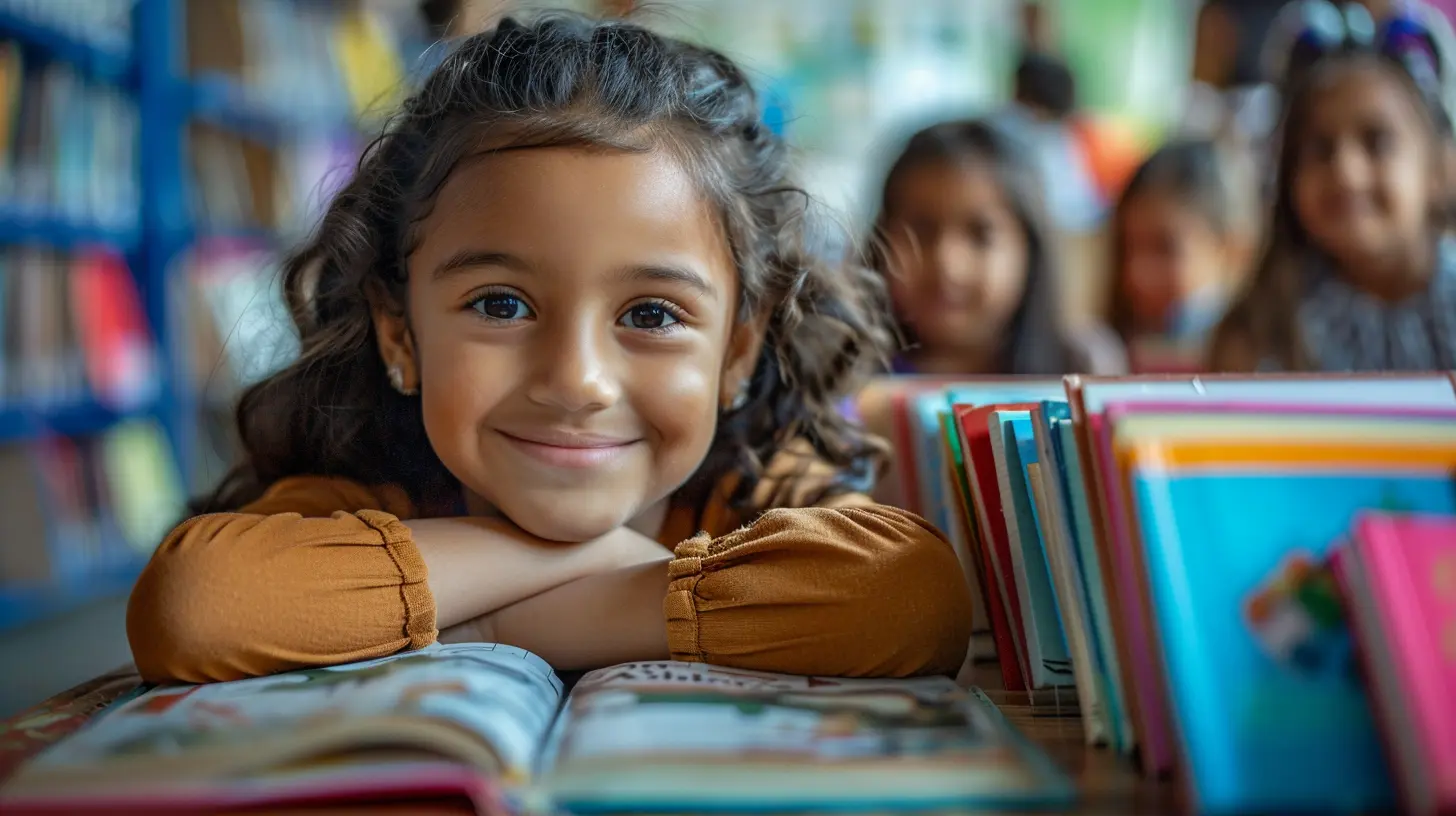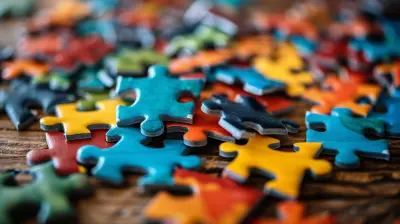The Impact of Bilingual Education on Literacy Development
2 June 2025
Imagine walking into a classroom where students effortlessly switch between two languages, confidently expressing their thoughts in both. Pretty amazing, right? This is the power of bilingual education! But beyond just being able to speak two languages, does learning in a bilingual environment impact literacy development? Spoiler alert: It absolutely does—and in the best way possible.
Bilingual education isn’t just about memorizing vocabulary in another language; it’s about shaping how the brain processes, understands, and interacts with language. In this article, we’re diving deep into how bilingual education influences literacy development, why it’s beneficial, and what makes it such a game-changer for future generations.

What Is Bilingual Education?
Before we get into the nitty-gritty of literacy development, let’s clear up what bilingual education actually means. Simply put, bilingual education is a teaching method where students learn academic subjects in two languages. This isn't just about taking a foreign language class—it's about fully integrating both languages into daily learning.There are different types of bilingual education programs, such as:
- Transitional Bilingual Education – Teaches subjects in a student’s native language first while gradually introducing the second language.
- Dual-Language Immersion – Students learn in two languages equally, helping them develop proficiency in both.
- Heritage Language Programs – Designed to maintain and strengthen a student’s home language alongside their second language.
No matter the approach, the goal remains the same: to create fluent, literate, and knowledgeable students in multiple languages. But how does this affect literacy development? Let’s break it down.

How Bilingual Education Boosts Literacy Development
1. Enhances Cognitive Skills
Bilingual students don't just learn two languages—they strengthen their brains in the process. Studies show that learning in two languages improves cognitive abilities such as problem-solving, critical thinking, and multitasking. These enhanced brain functions directly impact literacy skills because they improve reading comprehension, analysis, and the ability to understand complex texts.2. Builds Stronger Reading Skills
Here’s something cool: When students learn to read in one language, they can apply those skills to another language. This phenomenon is called biliteracy transfer, where literacy skills in one language help strengthen literacy in another. For instance, if a student learns to recognize sentence structure and grammar in Spanish, they’ll have an easier time understanding similar concepts in English.Think of it like learning to drive a car—once you understand the basics of handling one vehicle, switching to another model is much smoother!
3. Improves Vocabulary Growth
Bilingual students are exposed to more words, phrases, and ways of expressing ideas compared to monolingual students. This means they develop a broader vocabulary and a deeper understanding of word meanings in both languages.For example, a student fluent in English and French will not only know more words but will also have a richer grasp of linguistic nuances. This added exposure strengthens their overall literacy, making it easier to comprehend texts, write effectively, and communicate with precision.
4. Encourages Metalinguistic Awareness
Ever noticed how bilingual people can easily play around with languages—switching words, adjusting grammar, or even translating on the spot? That’s because they have metalinguistic awareness, meaning they understand how languages work beyond just memorization.This ability allows students to:
- Recognize sentence structures more easily
- Identify spelling and pronunciation patterns
- Develop stronger writing and editing skills
In essence, bilingual students don’t just use language—they truly understand how it functions. And that’s a huge literacy advantage!
5. Strengthens Writing Skills
Good writers have a solid understanding of grammar, sentence structure, and storytelling. Guess what? Bilingual education enhances all of these!Since bilingual students are constantly processing linguistic differences, their brains naturally become better at organizing thoughts, structuring sentences, and adapting writing styles. Research even suggests that bilingual students excel in creative writing because they can pull inspiration from multiple linguistic and cultural perspectives.
6. Boosts Academic Performance
Some people fear that learning two languages might confuse students or slow them down. The truth is quite the opposite! Various studies confirm that bilingual students often outperform their monolingual peers in reading comprehension, writing, and standardized tests.Why? Because learning in two languages sharpens memory, concentration, and problem-solving—all of which are crucial for academic success.

The Long-Term Benefits of Bilingual Literacy
1. Increases Career Opportunities
In today’s globalized world, being bilingual isn't just impressive—it’s highly valuable. Many employers actively seek bilingual individuals because they can communicate across cultures, expand business opportunities, and adapt to diverse workplaces.From international business to translation, teaching, and even diplomacy, bilingual literacy gives students a competitive edge in almost any field.
2. Promotes Cultural Awareness
Language and culture go hand in hand. By learning in a bilingual environment, students don’t just gain language skills—they develop cultural empathy and a deeper appreciation for diverse perspectives.This exposure helps students become more open-minded, understanding, and accepting of different traditions and viewpoints, which is essential in today’s interconnected world.
3. Delays Cognitive Decline
Here’s another surprising benefit: Studies show that lifelong bilingualism can delay cognitive decline and even reduce the risk of Alzheimer's disease. Since bilingual individuals constantly engage their brains in linguistic switching, their cognitive functions remain sharper for longer.So, not only does bilingual literacy help during school years, but it also positively impacts brain health well into old age.

Addressing Common Myths About Bilingual Education
Despite its proven benefits, some myths still surround bilingual education. Let’s bust a few of them:- Myth #1: Learning two languages confuses children.
Truth: Bilingual students might mix languages occasionally, but this is a sign of cognitive development—not confusion! Their brains are simply navigating two linguistic systems at once.
- Myth #2: Bilingualism causes speech delays.
Truth: Some bilingual children might take a little longer to start speaking compared to monolingual peers, but this is temporary. Once they start talking, their language skills develop rapidly in both languages.
- Myth #3: It’s better to master one language before learning another.
Truth: Research shows that children learn languages more easily when they are exposed to them early and simultaneously. The earlier they start, the better their fluency and literacy development.
Final Thoughts
Bilingual education isn't just about speaking two languages—it’s about unlocking greater literacy, cognitive abilities, and future opportunities. From stronger reading and writing skills to improved problem-solving and cultural awareness, the benefits of bilingual education go far beyond the classroom.So, if you ever get the chance to enroll in a bilingual program or raise bilingual children, go for it! The lifelong advantages make it one of the best educational investments you can make.
all images in this post were generated using AI tools
Category:
Bilingual EducationAuthor:

Monica O`Neal
Discussion
rate this article
3 comments
Ella McGuffin
Bilingual education fosters rich literacy skills, nurturing diverse language connections that enhance student understanding and growth.
June 10, 2025 at 3:15 AM

Monica O`Neal
Thank you for highlighting the vital role of bilingual education in fostering literacy skills and diverse language connections! Your insights emphasize its importance in enhancing understanding and growth among students.
Zorina McNeil
Bilingual education significantly enhances literacy development by fostering cognitive flexibility, improving critical thinking skills, and increasing cultural awareness, ultimately creating well-rounded learners who excel in diverse linguistic environments.
June 4, 2025 at 2:30 AM

Monica O`Neal
Thank you for your insightful comment! I completely agree that bilingual education deeply enriches literacy development and cultivates essential skills in learners.
Jade Porter
This article beautifully highlights the profound benefits of bilingual education on literacy development. It's inspiring to see how embracing multiple languages can enrich learning experiences and empower students. Thank you for shedding light on this important topic that truly supports diverse learners and their journeys!
June 3, 2025 at 4:09 AM

Monica O`Neal
Thank you for your thoughtful comment! I'm glad you found the article inspiring and insightful regarding the benefits of bilingual education. Your support for diverse learners is much appreciated!



